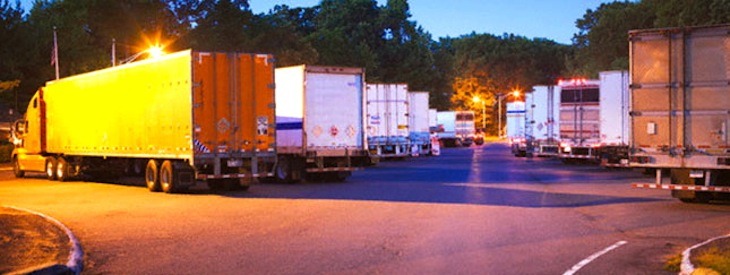Analyst sees new federal guidance on personal conveyance as a ‘non-event’
by June 7, 2018 3:28 pm 406 views

The Federal Motor Carrier Safety Administration (FMCSA) recently released guidance on drivers who operate commercial vehicles while off duty, and in an industry note, analyst Brad Delco and associate Scott Schoenhaus, both of Little Rock-based Stephens Inc., said investor concerns on the personal conveyance guidelines were an overreaction.
In a 13-page document, the FMCSA provided guidance on off-duty driving, which is referred to as personal conveyance. On Dec. 19, 2017, the federal agency proposed it would revise the guidance, which applies to all drivers who record hours of service and whose carriers allow personal conveyance of their vehicles.
The FMCSA received more than 380 comments on the proposed guidance revision, and several commenters were transportation companies and trucking organizations, including C.H. Robinson, Crete Carrier, Schneider National, American Trucking Associations and the Owner Operator Independent Drivers Association.
The new guidance is expected to lead to increased uniformity in enforcement of the hours of service rules but does not change the rules, according to the FMCSA. Many of the comments regarded concern over drivers running out of hours as a result of delays in the loading and unloading process. But the guidance gives drivers flexibility to find a place to rest as this would be considered off-duty time in personal conveyance. The guidance also allows drivers of the 2.3 million straight trucks running on U.S. interstates to operate in off-duty status for personal conveyance even though the truck is laden.
Truck drivers who are off-duty for personal conveyance are not impacted by the 11- or 14-hour limitations, the 60 and 70 hour limitations, the 34-hour restart provisions or any other on-duty status, the guidance shows.
Commenters asked for clarification on whether driving from a shipping or receiving site would be allowed after a driver’s available hours of service was exhausted. The FMCSA guidance shows the time spent driving from a shipper or receiver to reach the nearest rest area would be considered personal conveyance. If a driver cannot park at the nearest rest area and must go on to the next one, the driver should log the movement.
If a police officer were to have a driver move the driver’s vehicle during a 10-hour rest break, moving the vehicle to the nearest rest area would not require restart of the rest period, the guidance shows. Also, drivers who drive to a rest area while off-duty can go on duty immediately and are not required to return to the last place they were on duty before returning to on-duty status.
The guidance clarified FMCSA’s definition of enhancing operational readiness and that it’s on-duty driving benefiting the carrier. Except for the previously mentioned reasons for personal conveyance, if a driver moves a load closer to its destination, it’s not considered personal conveyance. If dispatched drivers were to stop at a location such as their home, and if the home was closer to their next destination, this would not be personal conveyance.
INVESTOR CONCERNS
“In short, inbound investor concern was centered around a more subjective standard as it relates to what could/would be considered ‘personal conveyance,’ according to Delco and Schoenhaus. “The fear mainly rests on the idea that carriers could use an ‘off-duty’ status, or personal conveyance to fudge compliance with current hours-of-service laws and as a result make the recent impact from ELDs (electronic logging devices) less pronounced, particularly on smaller carriers.”
“We believe the updated guidance is a non-event and if investors attribute weakness to (truckload) stocks to this headline, we see it as a buying opportunity.”
When drivers operate their vehicle while off duty, they must log the personal conveyance on their ELD, and if they were to log personal conveyance time as anything else than was previously mentioned, it would be a violation, according to Delco and Schoenhaus.
They were concerned drivers could abuse the personal conveyance status, but citing page two, paragraph three of the guidance, they believe it eliminates any debate as ELDs automatically record the off-duty movement and location of a commercial vehicle.
“If the (commercial vehicle) is being used for personal conveyance (i.e. in off duty status), the movement of the vehicle in off-duty status will be documented, and more importantly, the location of the (commercial vehicle) will be documented as well,” said Delco and Schoenhaus, adding that investor concerns over the guidance was likely warranted initially, but in hindsight, should be seen as an overreaction.
“We believe the revisions just provide clarity as to what status a driver is in while traveling between his/her home and a terminal or between lodging and a restaurant since these events now have to be recorded electronically. We believe any attempt by smaller carriers to use personal conveyance on their driver log as a means to game the system would be caught and a corresponding (hours of service) violation would be issued.”
